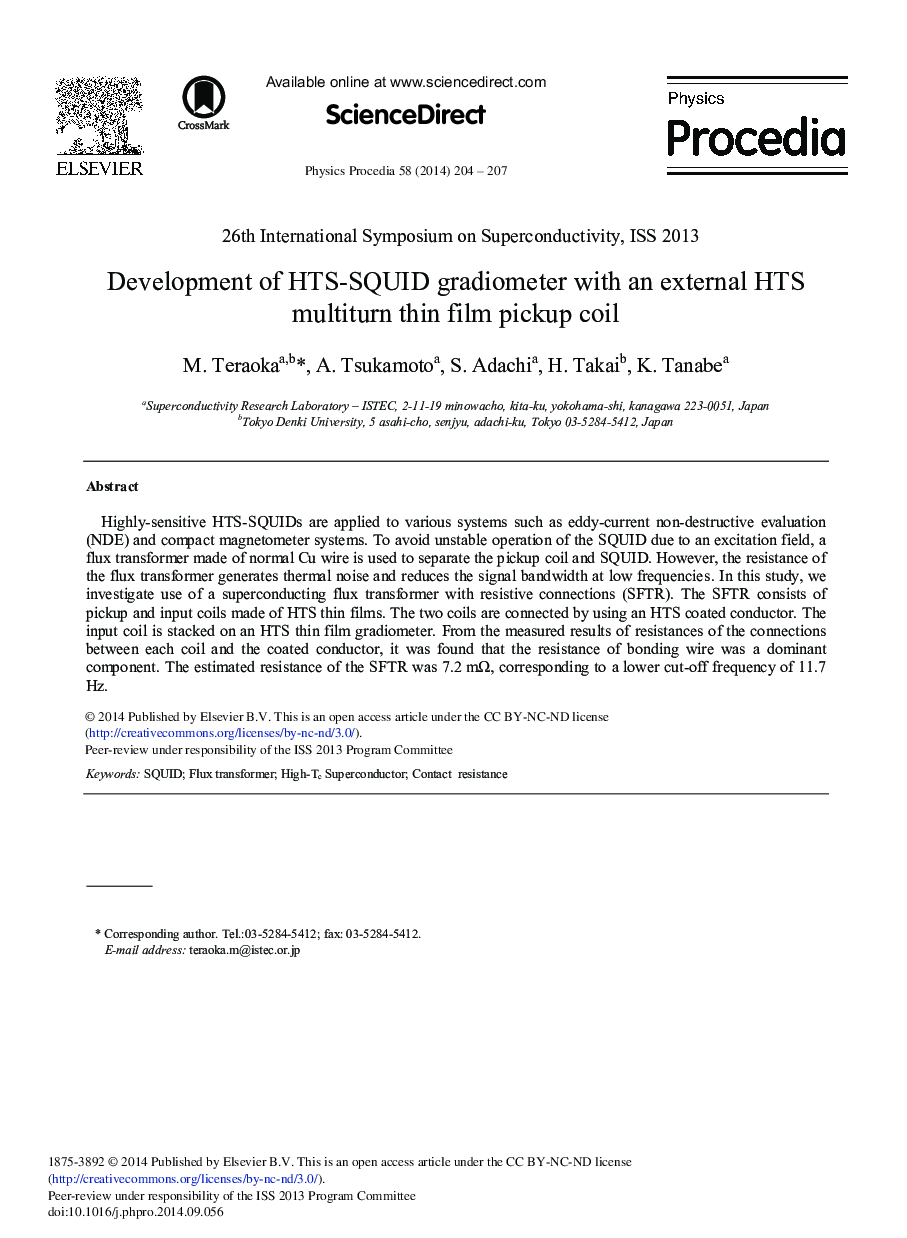| Article ID | Journal | Published Year | Pages | File Type |
|---|---|---|---|---|
| 1874584 | Physics Procedia | 2014 | 4 Pages |
Highly-sensitive HTS-SQUIDs are applied to various systems such as eddy-current non-destructive evaluation (NDE) and compact magnetometer systems. To avoid unstable operation of the SQUID due to an excitation field, a flux transformer made of normal Cu wire is used to separate the pickup coil and SQUID. However, the resistance of the flux transformer generates thermal noise and reduces the signal bandwidth at low frequencies. In this study, we investigate use of a superconducting flux transformer with resistive connections (SFTR). The SFTR consists of pickup and input coils made of HTS thin films. The two coils are connected by using an HTS coated conductor. The input coil is stacked on an HTS thin film gradiometer. From the measured results of resistances of the connections between each coil and the coated conductor, it was found that the resistance of bonding wire was a dominant component. The estimated resistance of the SFTR was 7.2 mΩ, corresponding to a lower cut-off frequency of 11.7 Hz.
